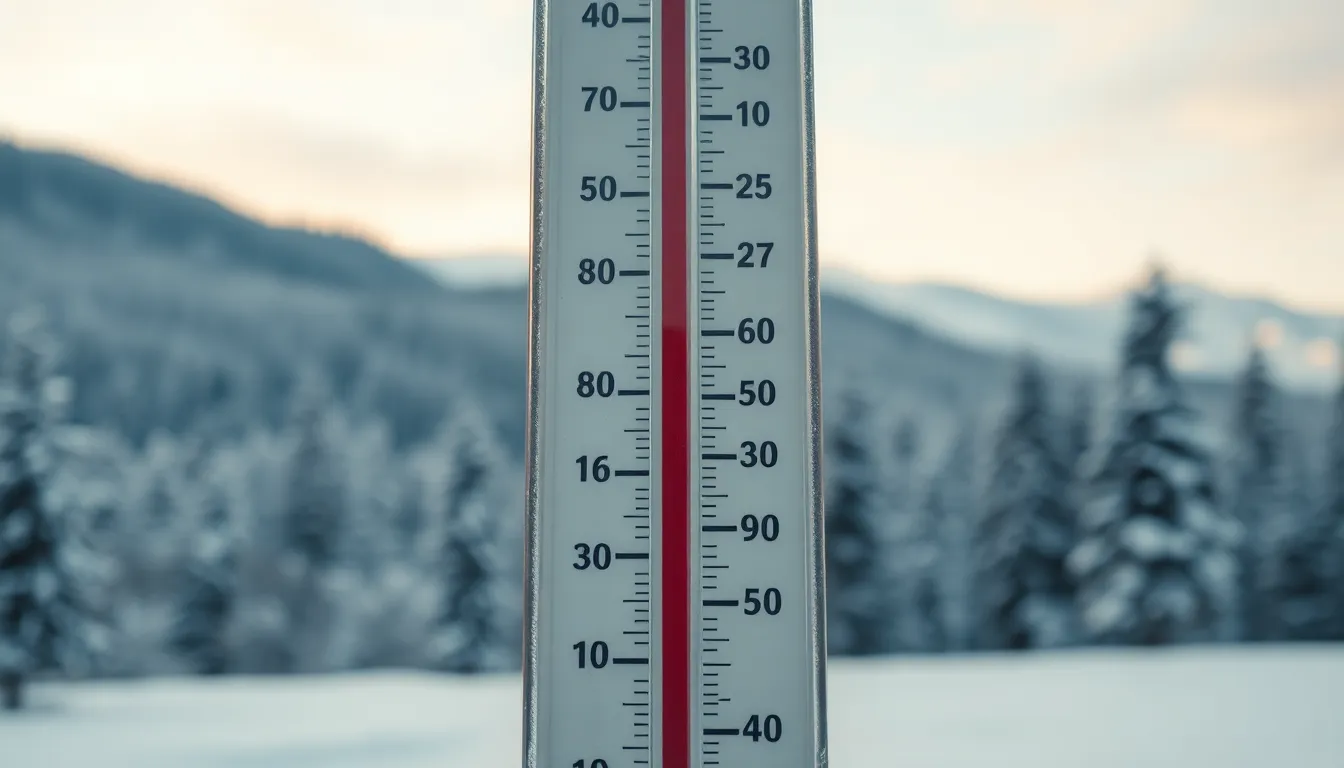Ever found yourself staring blankly at a temperature reading in Celsius, wondering what it means in Fahrenheit? You’re not alone! Converting between these two scales can feel like deciphering a secret code, especially when planning a beach day or deciding how many layers to wear.
At 22° C, it’s that sweet spot where the sun’s warmth kisses your skin without turning you into a sweaty mess. But what does that translate to in Fahrenheit? Spoiler alert: it’s not rocket science! Understanding this conversion can save you from chilly surprises or unexpected heatwaves. So grab your favorite beverage and get ready to unravel the mystery of 22° C in Fahrenheit—because who doesn’t want to be the temperature conversion guru among friends?
Table of Contents
ToggleUnderstanding Temperature Conversion
Converting temperature between Celsius and Fahrenheit presents a common challenge. Familiarity with the formula makes this process straightforward. For example, multiplying the Celsius temperature by 1.8 adds 32 to yield the Fahrenheit equivalent.
To convert 22° C, here’s the calculation:
- Multiply 22 by 1.8, resulting in 39.6.
- Add 32 to 39.6, which totals 71.6° F.
The outcome shows that 22° C equals 71.6° F. Knowing this conversion proves beneficial in daily life. For instance, planning outdoor events requires an understanding of weather conditions.
Understanding temperature scales is essential. Celsius measures temperature based on the freezing and boiling points of water, whereas Fahrenheit uses different reference points. People often use Celsius in most countries, while Fahrenheit remains prevalent in the United States.
Temperature conversion aids in various scenarios. Checking the weather before travel, preparing for sporting events, or even cooking can benefit from these calculations. Many apps and online tools simplify conversions, yet grasping the concept leads to confidence when encountering different temperature representations.
By practicing conversions, individuals become more adept at interpreting temperatures in their environments. Repeatedly using the conversion formula reinforces understanding, allowing them to adapt to various situations.
Mastering Celsius to Fahrenheit transformations enhances overall preparedness. Individuals equipped with this knowledge feel more in control of their activities, particularly when unexpected weather changes occur.
Celsius and Fahrenheit Scales

Understanding the Celsius and Fahrenheit scales plays a crucial role in temperature conversion. Both scales measure temperature but have distinct reference points and uses.
Historical Context
Fahrenheit was developed by Daniel Gabriel Fahrenheit in the early 18th century. He assigned the freezing point of water at 32° F and the boiling point at 212° F. Celsius, created by Anders Celsius in 1742, defined his scale using the freezing point at 0° C and the boiling point at 100° C. Over time, Celsius gained popularity worldwide for scientific purposes, while Fahrenheit remains prevalent in the United States, particularly in daily life and weather reporting.
Key Differences
The primary differences between Celsius and Fahrenheit lie in their reference points and increments. Celsius uses a smaller temperature increment due to its 100-point scale between freezing and boiling points. For example, a rise of 1° C represents a change in temperature equating to a rise of 1.8° F in Fahrenheit. Due to this difference, converting temperatures involves specific formulas, making understanding both scales essential for clear communication about weather and cooking. Finally, familiarity with both systems helps individuals adapt better to different environments and cultures.
Converting 22° C to Fahrenheit
Converting 22° C to Fahrenheit involves a straightforward formula. The process ensures clarity in communicating temperature in different regions.
The Conversion Formula
Understanding the conversion formula is crucial for accurate temperature readings. To convert Celsius to Fahrenheit, multiply by 1.8 and then add 32. For instance, using 22° C in the formula, the conversion becomes 22 × 1.8 + 32, which gives the Fahrenheit equivalent. This process highlights how different temperature scales relate to each other, enhancing comprehension in various contexts.
Step-by-Step Calculation
Performing the calculation for 22° C involves a few simple steps. First, multiply 22 by 1.8, resulting in 39.6. Next, add 32 to this result, which gives 71.6° F. By following these steps, one can convert any Celsius temperature accurately. Familiarity with this method empowers individuals to quickly interpret temperatures encountered in everyday life, whether planning outdoor activities, traveling, or cooking.
Practical Applications
Understanding temperature conversions plays a critical role in daily activities. Knowing that 22° C equals 71.6° F helps individuals navigate various situations effectively.
Everyday Scenarios
Weather forecasts often involve both Celsius and Fahrenheit. Travelers benefit from knowing how to convert, ensuring they pack appropriately for their destinations. Outdoor events, such as picnics or sporting activities, depend on accurate temperature readings. Cooking also requires precision; many recipes use Fahrenheit, while some cooks may prefer Celsius. Being adept at conversions ensures that meals are prepared correctly and enjoyed at the right temperatures.
Importance in Science
Temperature scales are vital in scientific research and experimentation. Many studies, particularly in climate science and biology, utilize Celsius for precision. Celsius measurements grant scientists the ability to communicate results clearly among international peers. Laboratories often rely on standard Celsius temperature controls to ensure accuracy in experiments. Familiarity with both Celsius and Fahrenheit enhances understanding in educational settings, paving the way for advancements in various scientific fields.
Understanding the conversion of 22° C to 71.6° F is a valuable skill that can enhance daily life. Whether planning a trip or preparing a meal knowing how to navigate between Celsius and Fahrenheit makes individuals more adaptable to different environments.
This knowledge not only aids in personal activities but also fosters better communication in scientific contexts. By becoming familiar with both temperature scales people can approach various situations with confidence and clarity. Mastering these conversions ultimately leads to a more informed and prepared lifestyle.





